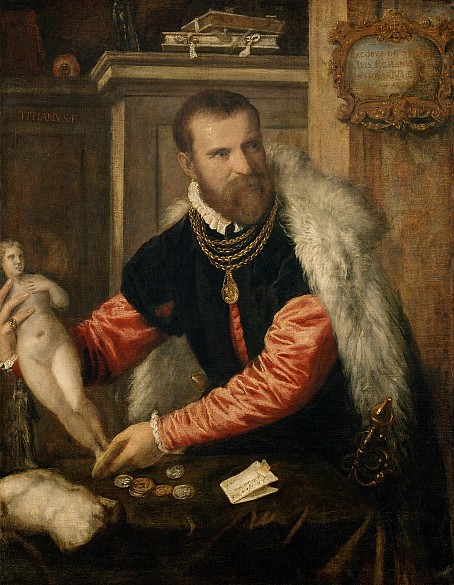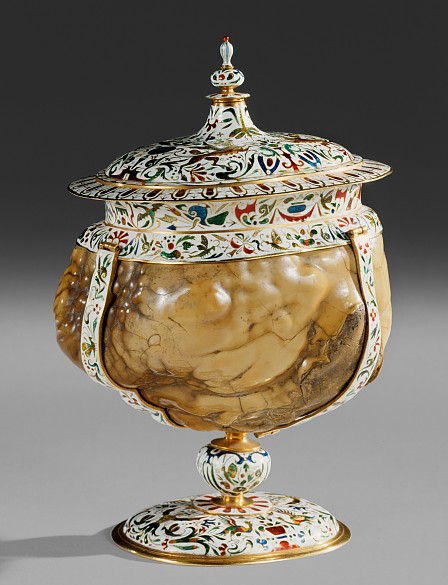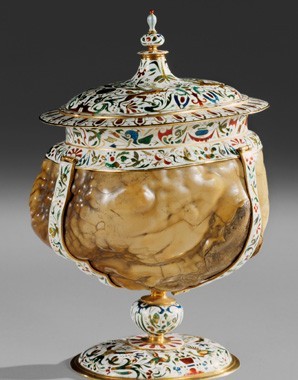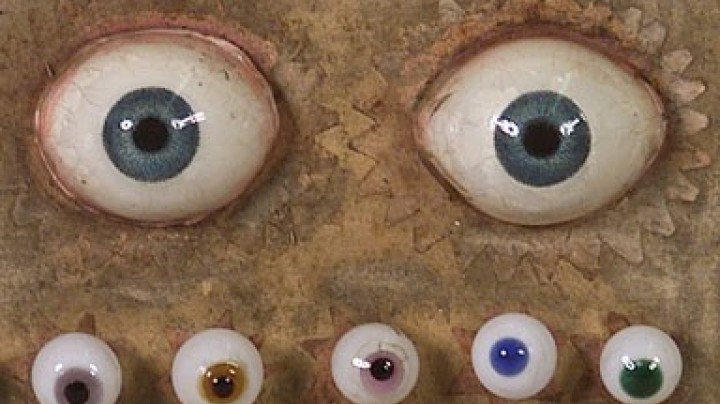Theatrum mundi: the whole world contained in a single chamber
In the second half of the sixteenth century cabinets of curiosities were established at many European courts and also by members of the urban middle classes. Objects from nature and works of art were assembled in a small space to give an all-embracing image of the world.
The collections of Central European princes and wealthy citizens were based on Italian models, for example the collections of the Este and Gonzaga families. Intermediaries such as the Mantuan Jacopo Strada purchased works of art and books for private clients as well as the Bavarian court and the emperor. A dedicated specialist called an antiquarius, a kind of curator, administered the collection. At the imperial court Jacopo Strada was appointed to this newly-created and influential position.
These cabinets of curiosities were favoured by princes as a means of projecting their power, riches and extensive connections. Having viewed the cabinet of Rudolf II at Prague, Cardinal Alessandro d’Este expressed the opinion that the ‘treasure was worthy of its owner’. In these cabinets of curiosities natural objects and works of art complemented one another. This mixture of objects was based on the assumption that there was a correspondence between things created by man and the natural world created by God. Amassing both naturalia and artificialia was thought to result in an encyclopaedic collection, a mirror of the cosmos in miniature. The cabinets were intended to reflect the sum of knowledge about the world, serving the desire for universal knowledge. The possession of a microcosm in the shape of a Kunstkammer symbolized power over the world at large, the macrocosm.
The function of a ‘museum’ of this kind was described by the scholar Samuel Quiccheberg in 1565 in his Inscriptiones vel tituli Theatri Amplissimi, a work of fundamental importance for the history of collecting in Europe, as that of a ‘theatrum mundi’: ‘A theatre conceived in the broadest possible terms, containing genuine materials and accurate reproductions of the whole universe’. Natural objects such as ostrich eggs were furnished with decorative mounts and thus made into art objects that were intended to demonstrate the unison between Nature and Art – a notion that was characteristic of these times.
These cabinets of curiosities with their objects, some of which seem highly unusual to modern eyes, served not only to satisfy the appetite for sensation but also as collections in which animate and inanimate nature could be observed and studied.
















